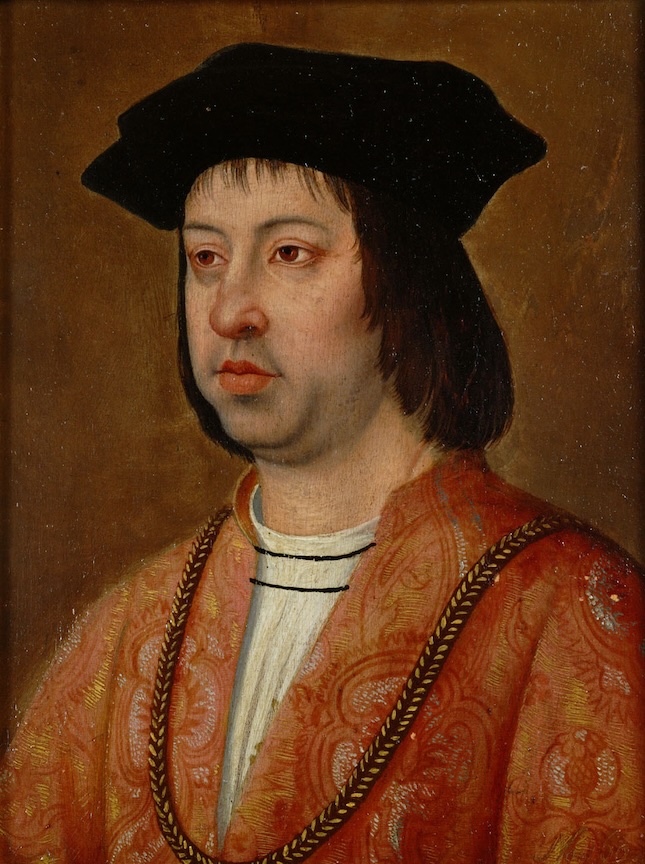Ferdinand II (1452-1516)

Ferdinand II of Aragon, known as the monarch who financed Columbus' first voyage to the New World in 1492, Ferdinand also holds the dubious distinction of having expelled the Jews from Spain in that same year. He was the first to rule all of Spain from the Pyrenees to Gibraltar, having acquired the various Spanish thrones and regions through his own family holdings, marriage to Isabella of Castile, and conquest. After the death of Isabella, Ferdinand married a niece of France's Louis XIII. His grandson, Charles V of the Holy Roman Empire, was his successor. 1452-1516.
Ferdinand II of Aragon, also known as Ferdinand the Catholic, was a central figure in the unification of Spain and played a pivotal role in shaping the early modern history of Europe. Born on March 10, 1452, in Sos del Rey Católico, Aragon, Ferdinand was the son of John II of Aragon and Juana Enríquez. His marriage to Isabella I of Castile in 1469 was one of the most significant events in Spanish history, as it eventually led to the unification of the crowns of Aragon and Castile, forming the basis of a unified Spanish kingdom.
Ferdinand and Isabella's marriage created a powerful dual monarchy, often referred to as the "Catholic Monarchs." Their reign marked the beginning of Spain's rise as a major European power. Together, they implemented a series of domestic and foreign policies that solidified their control over the Iberian Peninsula and expanded their influence beyond Europe. One of their most notable achievements was the completion of the Reconquista in 1492, which saw the conquest of Granada, the last Muslim stronghold in Spain, bringing an end to nearly 800 years of Islamic rule in the region.
Ferdinand is perhaps best known internationally for his role in financing Christopher Columbus's first voyage to the New World in 1492. This expedition, although initially intended to find a new trade route to Asia, resulted in the discovery of the Americas and the eventual establishment of Spanish colonies there. This momentous event not only opened a new chapter in world history but also marked the beginning of Spain's vast colonial empire, which would dominate global trade and exploration for the next several centuries.
However, Ferdinand's reign is also marked by controversial and often brutal policies. In 1492, the same year as Columbus's voyage, Ferdinand and Isabella issued the Alhambra Decree, which ordered the expulsion of all Jews from Spain. This decree was part of the broader Spanish Inquisition, which sought to enforce Catholic orthodoxy within the kingdom. The expulsion of the Jews, who were given the choice of conversion to Christianity or exile, led to the displacement of tens of thousands of people and the loss of a vibrant and prosperous Jewish community that had contributed significantly to Spanish society. The Inquisition and the expulsion policies left a dark legacy that has marred Ferdinand's reputation in history.
Ferdinand's ambitions were not limited to the Iberian Peninsula. After the death of Isabella in 1504, Ferdinand sought to expand his influence in Europe. In 1505, he married Germaine of Foix, the niece of Louis XII of France, in an attempt to strengthen ties with France and potentially produce a male heir to secure the succession of the Aragonese crown. However, the marriage did not result in a surviving male heir, and the Spanish crown eventually passed to Ferdinand's grandson, Charles I of Spain, who would later become Charles V, Holy Roman Emperor. Charles's reign would see the continuation and expansion of Ferdinand's policies, establishing the Habsburg dynasty as one of the most powerful in Europe.
Ferdinand II of Aragon died on January 23, 1516, in Madrigalejo, Extremadura. His death marked the end of an era in Spanish history, but his legacy lived on through the policies and institutions he helped establish. Ferdinand's reign was a period of both great achievements and significant moral questions. He was a monarch who played a crucial role in the formation of the modern Spanish state and the establishment of Spain as a global empire. However, his policies, particularly those related to religious intolerance and the expulsion of the Jews, continue to be subjects of debate and reflection.
Ferdinand II of Aragon's life and reign encapsulate the complexities of the late medieval and early modern period in European history. He was a ruler whose actions had far-reaching consequences, shaping not only the future of Spain but also the broader world, as the Age of Exploration and the colonial era began to unfold.
 >
>